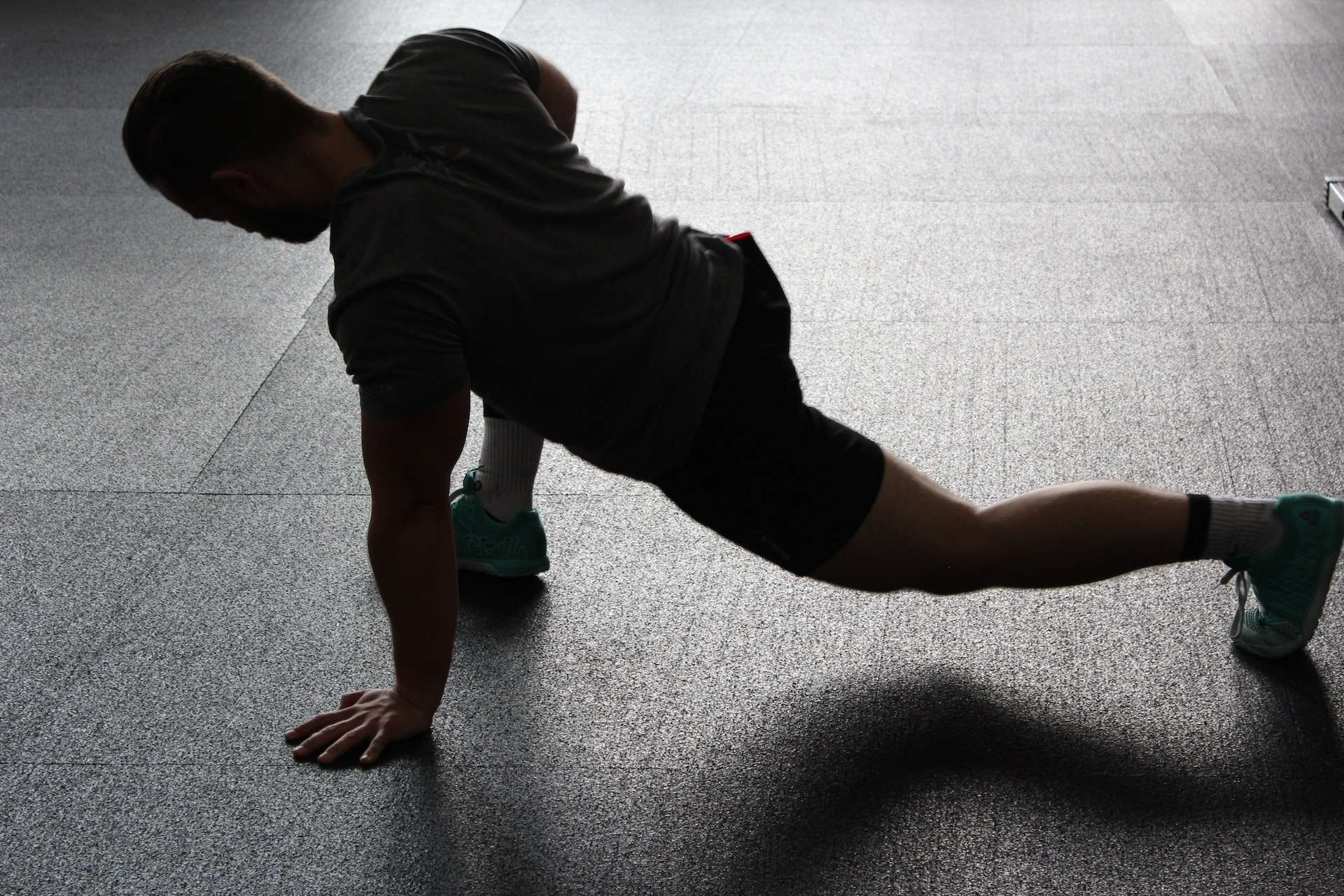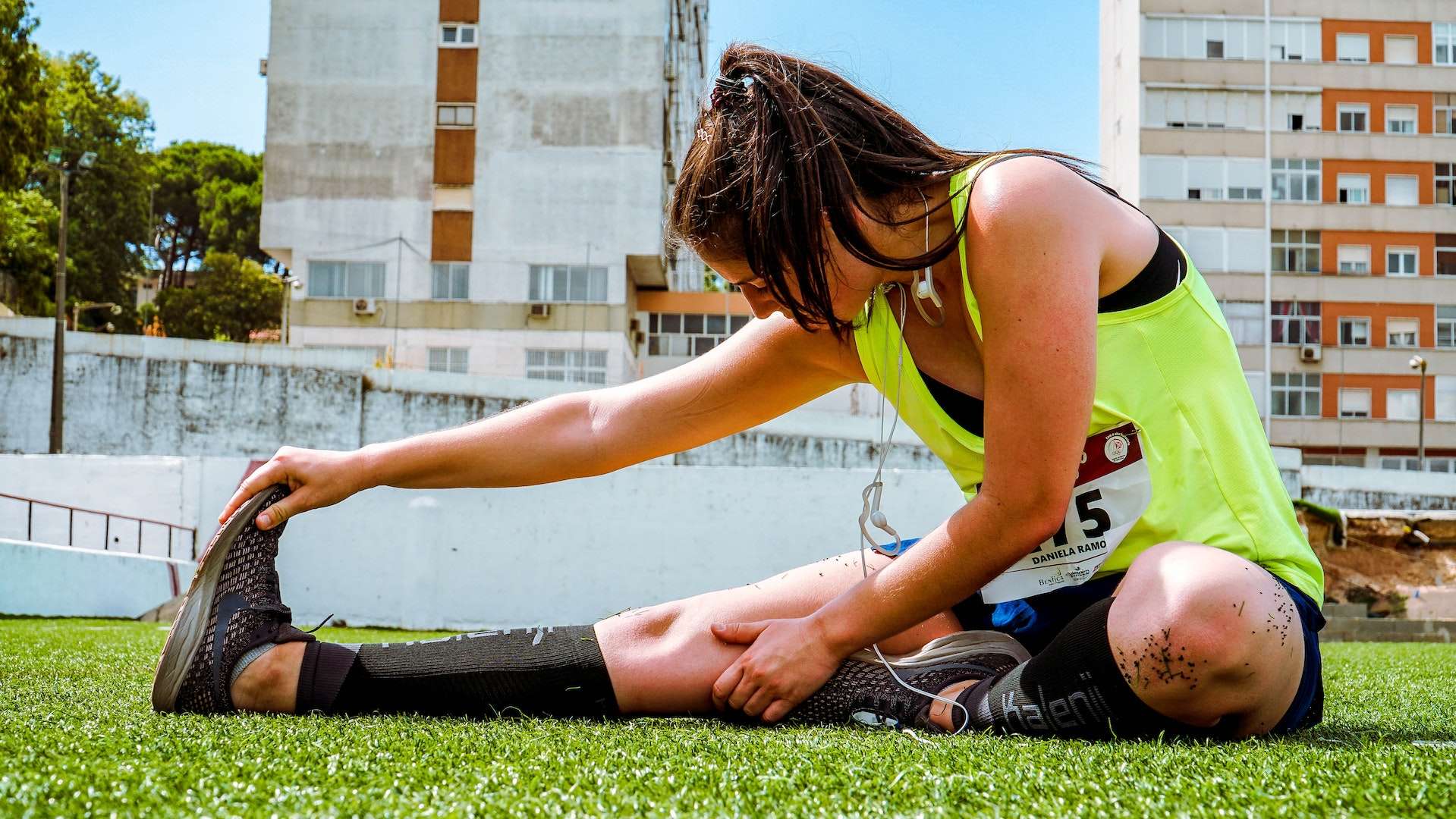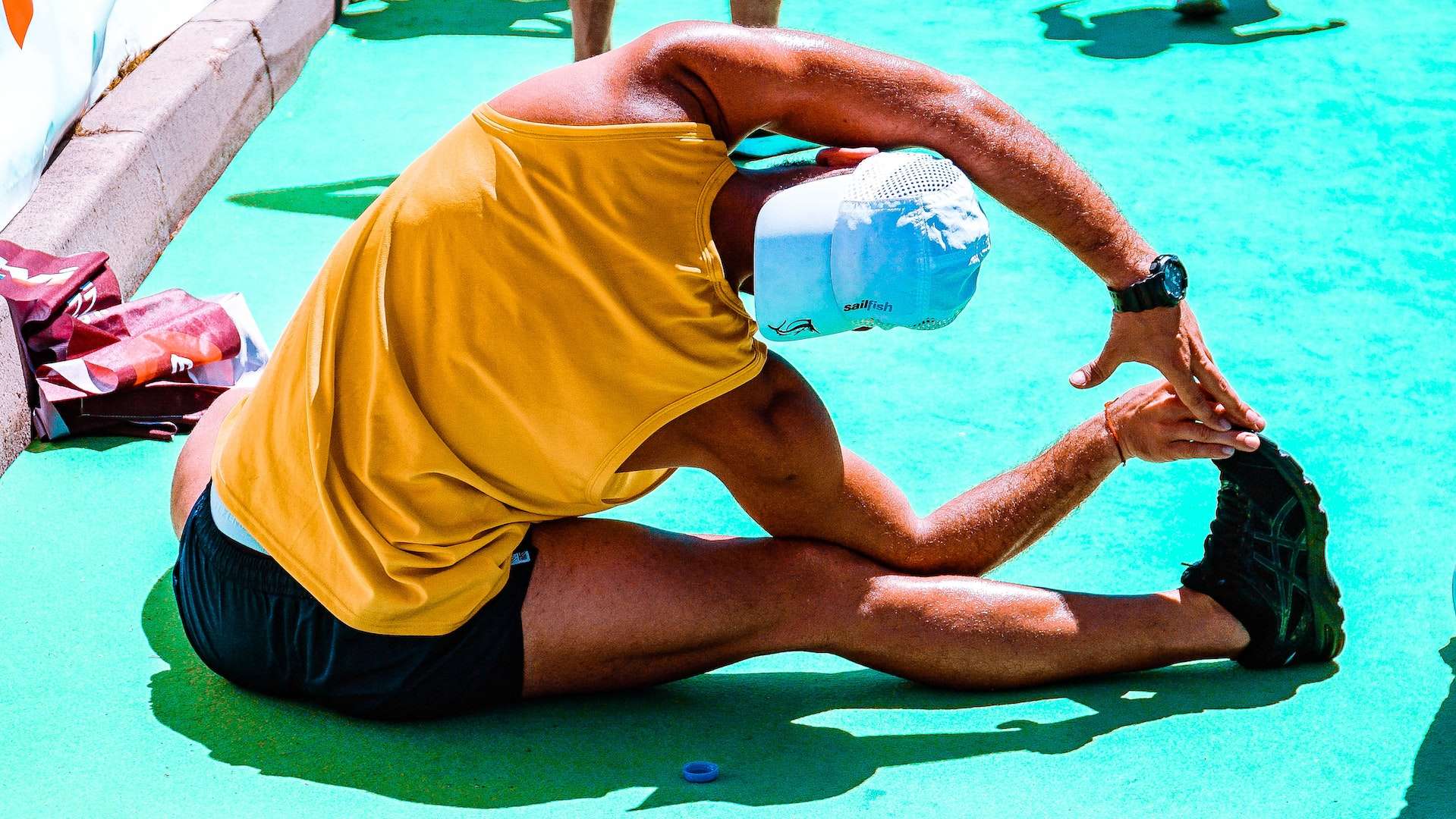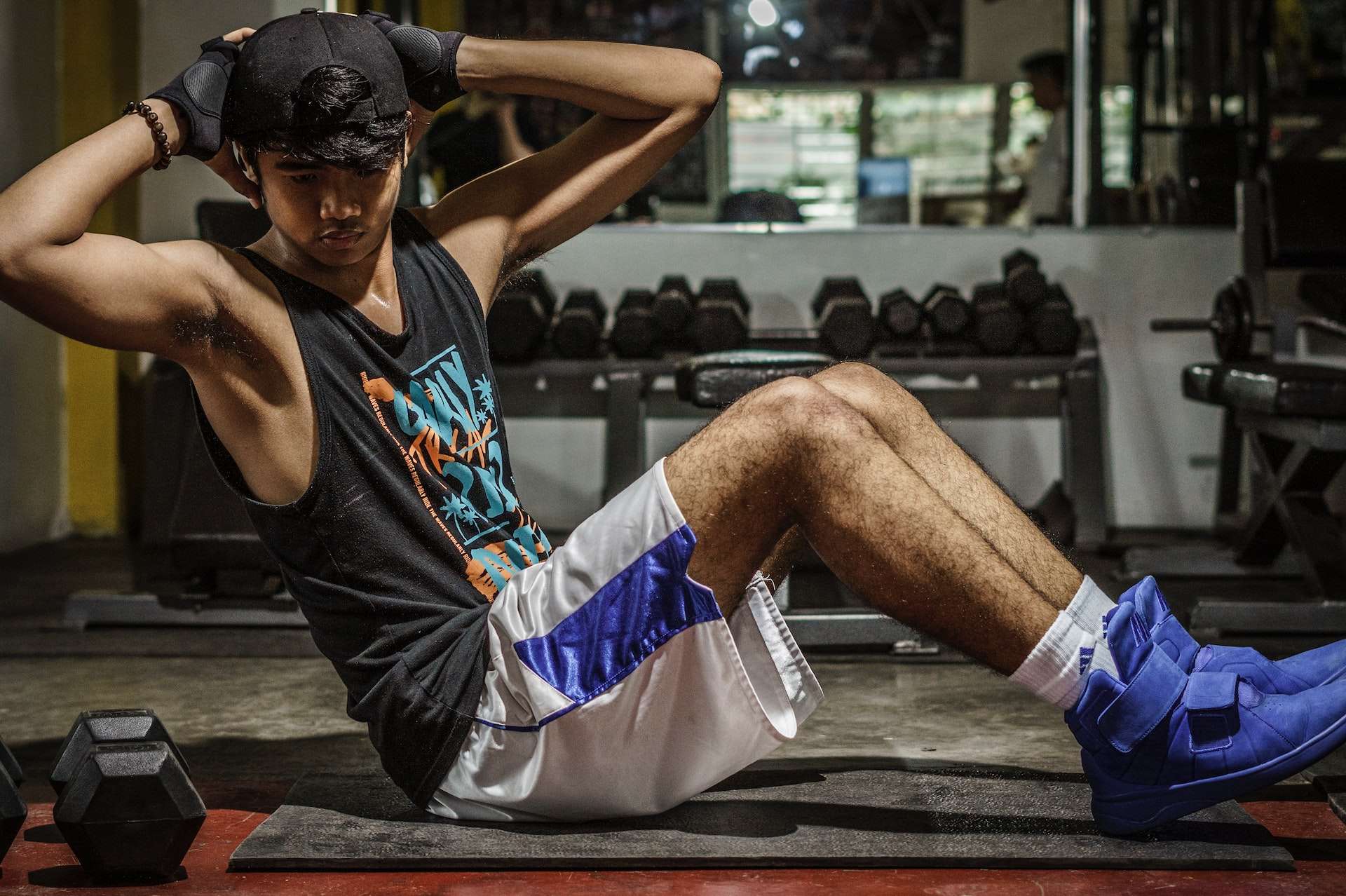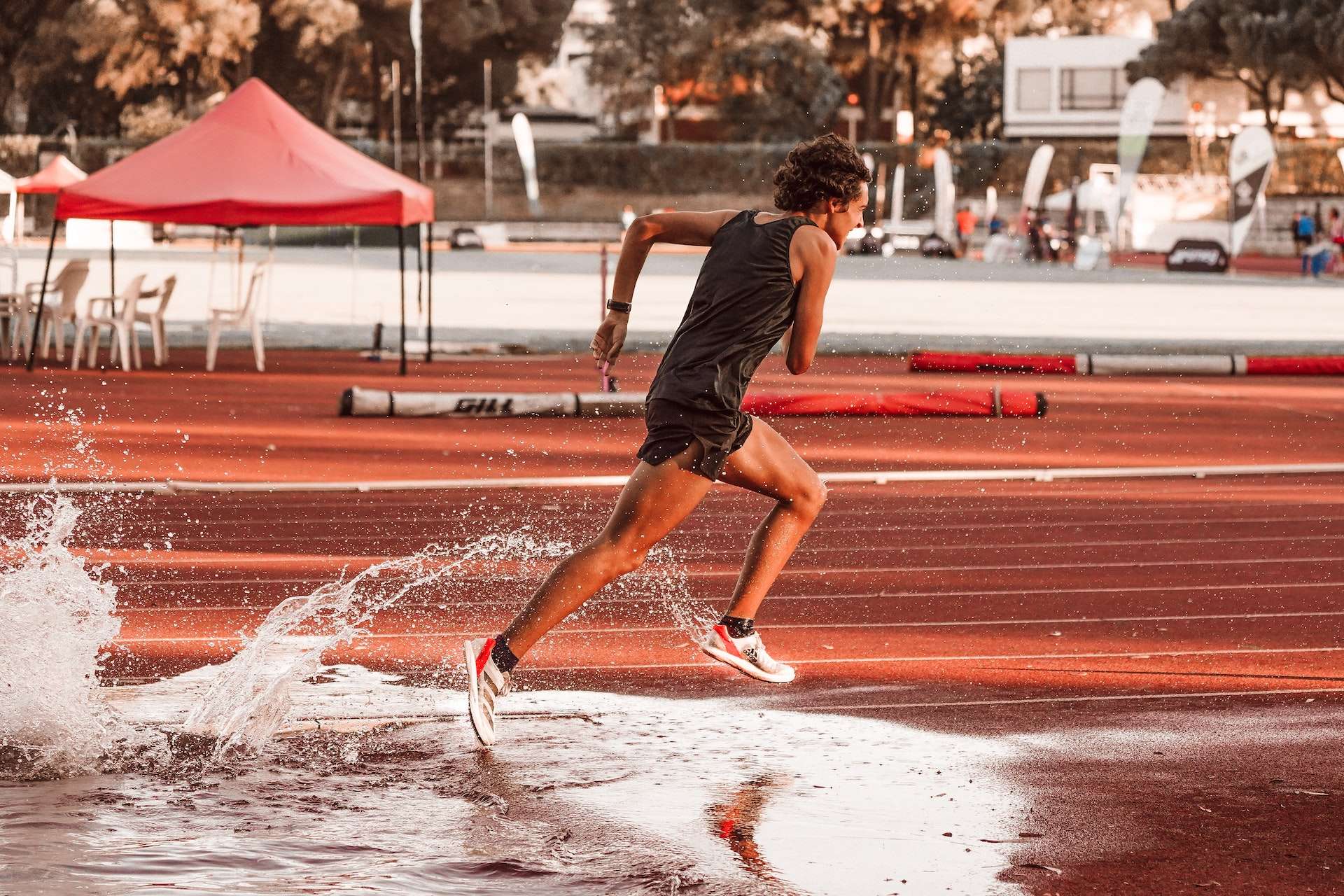|
Are you a runner who is suffering from knee pain? The repetitive impact of running can cause your knees to take a beating, and the resulting discomfort can easily take the joy out of your favorite activity. But don’t worry – there are some simple exercises and stretches that you can do to help alleviate knee pain caused by running. In this article, we’ll discuss what activities you can do to help keep your knees healthy so you can get back to enjoying your runs. Running is one of the best ways to stay fit and active, but aches and pains come with it – especially regarding our knees! For those who have experienced knee pain due to running, knowing that an activity you enjoy so much is causing discomfort can be discouraging. Fortunately, there are some simple stretches and exercises that you can do to reduce or even eliminate the pain in your knees caused by running. If you’re looking for relief from knee pain caused by running, then this article is for you! We will discuss a variety of stretches and exercises that you should incorporate into your routine to prevent further injury and reduce pain. So let’s dive in and learn how to keep our knees healthy to enjoy running again!
Table of Contents
show
Knee Pain Caused By RunningIf you’re a runner, chances are you’ve experienced knee pain at some point. It’s an unfortunate but common issue that can cause immense discomfort and prevent you from enjoying your favorite activity. But the good news is that with the proper knowledge and exercises, you can manage knee pain when running and return to doing what you love. First, it’s essential to understand the causes of knee pain when running. Several factors are at play, such as running down or uphill, having poor form, weak glutes, or tight hamstrings. Another culprit could be overtraining or pushing yourself too far without giving your body enough rest. Once you identify the source of your knee pain when running, you can start looking into ways to fix it. Exercises like stretching and strengthening can help alleviate knee pain from running in many cases. For instance, strengthening your glutes and quads can help reduce the strain on your knees while improving form and flexibility may help prevent further injury.
Additionally, concentrating on proper posture and landing technique can also go a long way in reducing knee pain when running. The key is to be mindful about treating existing conditions before attempting to run again—it’s essential to prevent further damage in the long run! By caring for your body through stretching and strengthening exercises tailored specifically for runners who experience knee pain when running, you’ll be back on track in no time! Understanding The Causes Of Knee Pain From RunningHave you ever experienced knee pain when running? It’s an awful feeling that can put a damper on your workouts. You may be wondering what causes this kind of pain and how to stop it from happening—well, understanding the different causes of knee pain when running can be the key to getting back on track to becoming a better runner. Many factors can contribute to knee pain when running. These include running long distances after ACL surgery, running on treadmills, squatting and jumping, or even bending while running. Each situation is unique and requires careful consideration when identifying the cause of your discomfort. Here are a few common causes of knee pain when running:
Prevention rather than cure is the best approach for knee pain when running. Taking steps such as avoiding high-impact activities like sprinting or sudden stops and turns can help reduce joint stress and keep them healthy for extended periods. Stretching regularly before and after runs helps loosen tight muscles around the knees, reducing knee pain associated with running over time. Stretches To Improve Knee Joint MobilityIf you’re an avid runner, you know the tightness and discomfort in your knees after a long run. Overusing the knee joint can lead to pain and inflammation, making running uncomfortable and dangerous. Fortunately, some stretches can help improve mobility in the knee joint and reduce discomfort during running. These stretches don’t require equipment and can be done anywhere with enough space to move around. Start by focusing on getting your muscles ready for exercise: warm up with light jogging or walking for a few minutes before stretching.
Then, begin with a simple quadriceps stretch, standing on one foot while bending the other leg behind you to hold onto your ankle with your hand. Hold this position for 30 seconds before repeating it on the other side. You can also do dynamic stretching exercises such as high knees or butt kicks to prepare your body for running. Next, target specific areas of the knee joint that may be causing pain while running. To reduce knee pain when running but not walking, strengthen your hip flexors with bent-knee hip bridges or clamshell exercises. For knee pain when running and climbing stairs, practice single-leg squats to strengthen your glutes and quads and improve stability in the knee joint. Finally, if you experience knee pain when cycling or running on concrete surfaces, try calf raises, or wall sits to build strength in those areas. With regular practice of these stretches — combined with a proper warm-up — you can help reduce knee pain from running and improve overall joint mobility for better performance on the road! Now let’s discuss strengthening exercises for the knee and surrounding muscles… Strengthening Exercises For The Knee And Surrounding MusclesStrengthening exercises are essential to any running program, especially with knee pain. Not only can they help to reduce the pain and discomfort associated with running, but strengthening your leg muscles can also help improve your running mechanics and impact, which can, in turn, help to prevent further knee pain. When it comes to strengthening exercises for the knee and surrounding muscles, there are a few essential exercises you should focus on. Lunges, squats, and step-ups are all great exercises that target the glutes, quads, and hamstrings—the muscles that support the knee when running. Clamshells and side-lying leg raises are also great for targeting the IT band—which often contributes to knee pain when running. Finally, single-leg deadlifts are a great way to work on balance and hip strength—both of which can be essential factors in preventing knee pain when running downhill or on a hard surface. Focusing on strengthening exercises is essential to help alleviate knee pain caused by running. If done correctly and consistently, they can not only reduce existing pain but also help prevent future issues from occurring. To ensure you’re getting the most out of your strengthening routine, it is essential to pay attention to proper form and warm-up and cool-down stretches before and after your runs – something we’ll discuss in more detail next. The Importance Of Proper Warm-Up And Cool-Down StretchesRunning is a great way to stay in shape and build endurance, but you must take proper precautions to avoid knee pain. A good warm-up and cool-down routine must be considered for runners. When done correctly, stretching and strengthening exercises can help alleviate knee pain caused by running on hills, running faster, and running for long distances like half or full marathons.
The key is strengthening the muscles around the knee joint and stretching them out before and after a run. This can help reduce stress on the knee from running downhill and prevent knee pain from running at higher speeds and longer distances. Stretching out your hamstrings and quads will help reduce knee tension when running. Strengthening exercises such as squats or lunges can also help improve the stability of the knee joint while running. For those experiencing chronic knee pain caused by running, taking time off may be necessary to allow your body to rest and heal. However, with careful warm-up stretches and strengthening exercises tailored to your needs, you can enjoy your runs while minimizing any risk of injury or further damage. By understanding how proper stretching and strengthening exercises fit into an overall approach to treating knee pain caused by running, you’ll be able to get back on track quickly – without compromising on performance or safety! Techniques For Proper Running Form To Reduce Knee StressProper form is critical for avoiding injury and knee pain when running. From downhill sprints to backward jogs, there are several techniques to reduce the stress placed on your knees while running. If you suffer knee pain when running downhill, keep your upper body relaxed and upright. Also, avoid leaning back, as this puts more pressure on your knees. When going uphill, shorten your stride and use a higher cadence so that your feet land closer to your center of gravity. Knowing how weather conditions affect your form is essential as a runner. When running in cold weather, please pay attention to the pressure on your joints as they become stiffer and less flexible in colder temperatures. Similarly, if you’re going up or down stairs with each stride, adjust the force applied for each step. Twisting motions should also be made with caution, as sudden jerks can increase the knee joint load. By following these simple tips and focusing on proper running form, you can minimize the risk of knee pain when out for a jog or run. Incorporating cross-training activities into your routine is essential to strengthen the muscles around the knees, which will help support them during runs. Incorporating Cross-Training Activities To Reduce Knee PainWhen relieving knee pain caused by running, incorporating cross-training activities into your routine can be a powerful tool. Not only can this help prevent injury in the long run, but it can also provide much-needed relief when your knees are aching. Here are four ways you can use cross-training to reduce knee pain: 1) Incorporate cycling into your training: By alternating between running and cycling, you can reduce the strain on your knees while still getting an effective workout. Cycling is beneficial for those experiencing knee pain when running but not cycling. 2) Alternate between uphill and downhill workouts: Uphill workouts like walking or hiking will improve strength and stability in your knees. In contrast, downhill workouts like running downhill will help reduce inflammation and pain – mainly if you’re dealing with knee pain from running flat feet or knee pain from running downhill.
3) Take it indoors: Sometimes, the weather could be more conducive to outdoor exercise. If you experience knee pain after excessive running in cold temperatures, try taking your workout inside with a low-impact activity like swimming or yoga. This is especially helpful for those who experience knee pain after running in new shoes and those who experience knee pain when running with no swelling. 4) Give yourself a break: Don’t push yourself too hard – sometimes rest is the best medicine! Aim to get at least one rest day each week where you give your body (and knees!) some time off from intense exercise. Cross-training may take some getting used to if you’ve never done it before, but once you start seeing the results – lessened joint stress, improved muscle tone, and reduced aches and pains – it becomes easier to make it part of your routine. And that’s key if you want to prevent future injuries due to overuse – so don’t overlook this critical step towards tackling knee pain from running! Now that we’ve discussed how cross-training can help alleviate painful symptoms, let’s turn our attention to another crucial factor in avoiding discomfort: the role of proper footwear in preventing knee pain from running. The Role Of Proper Footwear In Preventing Knee Pain From RunningYou are having the right pair of shoes when running can be a game-changer in preventing knee pain. You might have noticed that your knees hurt when running downhill or even starting on a run. Or have you seen knee pain running trails or during longer distances? Whatever the case, having the right shoes to support your feet, ankles, and knees is essential for injury prevention. One of the best ways to ensure you have the proper footwear for running is to visit a specialty store and get fitted with a shoe made specifically for your foot shape and size. The sales staff in these stores are usually trained professionals who can assess your gait and find a shoe that fits correctly and offers ample cushioning for your joints. Getting equipped with the correct running shoe can help reduce knee pain when running, not walking, and knee pain when running overweight or jumping. Additionally, it can help you avoid knee pain when starting on runs and possibly even reduce the chance of having knee pain running tape after extended distances. The combination of proper footwear plus adequate stretching before and after runs will go a long way in helping keep your knees healthy while still being able to enjoy your favorite activity – running! Plus, it’s essential to know that there are techniques to gradually increase mileage over time to minimize any additional stress on your knees so you don’t experience a sudden onset of knee-related issues like pain down your leg while running. So if you’re looking to stay active without compromising on joint health, make sure you have the right shoes plus a gradual plan for progressing distance safely! Tips For Gradually Increasing Running Mileage To Prevent Knee PainIncreasing your running mileage too quickly is a common cause of knee pain. According to the American Academy of Orthopedic Surgeons, overuse injuries account for up to 50 percent of all running-related injuries. This means building up your mileage when running is essential to avoid damage gradually. The key is increasing your weekly mileage by at most 10 percent. For example, if you usually run 10 miles a week, only increase this to 11 miles the following week. This will help strengthen the muscles and ligaments in your legs while avoiding any sudden strain on your knees. You must wear supportive and comfortable running shoes that provide adequate cushioning and support for your feet, ankles, and knees.
Proper footwear can help prevent knee pain from running due to stress or overuse injuries such as the runner’s knee, IT band syndrome, or patellofemoral pain syndrome (PFPS). To give your knees extra protection when increasing your mileage, try incorporating exercises that target the muscles surrounding the knee joint, such as squats and lunges. These exercises can help strengthen the muscles in your legs, reducing stress on the joints when running. Additionally, stretching can be beneficial for relieving knee pain from running as it helps reduce tension in the muscles around the joint. Stretches like downward dog, standing calf stretch, and hamstring stretches can help loosen tight muscles in both legs, contributing to knee pain when running up and down stairs or walking up them. By gradually increasing your weekly mileage while strengthening key muscle groups with proper form and technique, you can protect yourself from developing knee pain caused by running. The Benefits Of Foam Rolling For Knee Pain Caused By RunningKnee pain when running is something many of us have experienced, and it can be highly debilitating. Whether it’s a dull ache in the front, a sharp pain running down the back of the calf, or an uncomfortable sensation running up to the hip, knee pain after running can damper your exercise routine. Even worse, knee pain when running uphill or down stairs can make tackling those inclines and steps almost impossible. But there’s good news: foam rolling for knee pain caused by running is an effective way to reduce discomfort and get back out on the road. Foam rolling is a self-massage technique that uses a cylindrical piece of foam to target trigger points in your muscles. It helps improve blood flow, circulation, and flexibility, which can help alleviate knee pain from running. The best part? You don’t need any advanced knowledge or skills – roll over each muscle group slowly until you feel the tension release in the affected area. Before you know it, persistent knee pain after running will diminish! If you’re still experiencing knee pain when cycling or after trying foam rolling exercises for an extended period, it might be time to seek medical attention. When To Seek Medical Attention For Knee Pain From RunningWhen it comes to running, knee pain can be a real buzzkill. Whether you’re a beginner or an experienced runner, the jarring of your knees when going downhill or the excruciating pain you feel after running every day can damper your enthusiasm for running. If you’re feeling sharp knee pain when running downhill, lateral knee pain on the outside of the joint when running downhill, inner knee pain when running downhill, or an excruciating burning sensation in the knees when running fast, it’s time to take action.
The first step is to evaluate how much and how often you run. Taking breaks and mixing in other activities like swimming and cycling can help reduce excessive knee stress. Also, proper stretching and foam rolling before and after runs can help alleviate tension surrounding your knees. If these strategies don’t work, consider consulting a medical professional specializing in sports injuries. A qualified doctor can assess your situation and recommend appropriate treatments, including physical therapy or medications for pain relief. Without taking steps to manage knee pain from running, the condition may worsen over time, leading to the long-term damage that could require surgical intervention. So if you’ve been experiencing persistent knee pains while running, seek medical attention before they become unbearable! Conclusion:When it comes to running and knee pain, the best thing you can do is take preventive measures to avoid it in the first place. Taking care of your knees by doing regular stretches and strengthening exercises that target the surrounding muscles will help keep them healthy and strong. Proper warm-up and cool-down stretches are essential for keeping your joints limber and wearing appropriate footwear for running. If you increase your mileage, do so gradually to give your body time to adjust. And finally, foam rolling can be a great way to reduce inflammation and alleviate pain. If you still experience knee pain while running, despite taking all these steps, seeking medical attention is essential. A doctor or physical therapist can help you identify what might be causing the issue so they can provide an effective treatment plan tailored to meet your needs. Taking a proactive approach is critical to staying active and avoiding knee pain. By investing in preventive measures such as stretching and strengthening exercises, proper warm-up and cool-down routines, wearing appropriate footwear for running, gradually increasing mileage when necessary, and using foam rolling techniques, you can stay healthy and enjoy running without worrying about knee pain getting in the way. |
